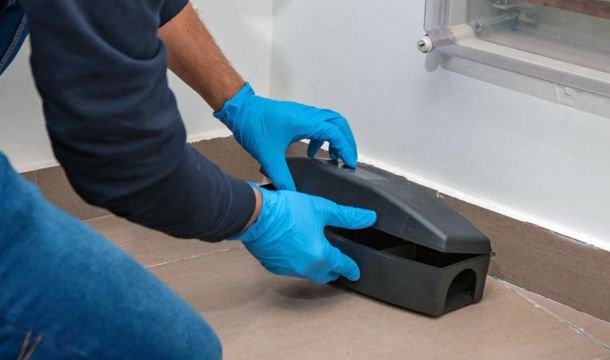How Long Do Bed Bugs Live Without a Host?
Bed bugs can survive without a host for significant periods. Adult bed bugs may live up to a year without feeding, while nymphs typically last 2-3 months in the absence of blood. Their survival is influenced by environmental conditions, such as temperature and humidity, and they can enter a state known as diapause to conserve energy. This dormant state allows them to extend their survival further when no host is available.
Understanding these survival mechanisms can be critical for effective control measures. You might find it insightful to explore methods for preventing and eliminating these pests effectively.
Bed Bug Lifespan Overview
Bed bugs have an impressive ability to survive without a host, which is vital to their resilience as pests. The lifespan of a bed bug varies significantly depending on its life stage. Adult bed bugs can live for up to a year without feeding, demonstrating a noteworthy survival capacity. In contrast, nymphs have a shorter survival duration, typically lasting only 2-3 months without blood.
So, how long can bed bugs survive without blood? Generally, adults can endure several months, while younger bed bugs are more vulnerable. This extensive ability to withstand starvation allows them to thrive in environments where hosts may be scarce.
Do bed bugs hibernate? While they don’t hibernate in the traditional sense, they can enter a state of diapause under unfavorable conditions, slowing their metabolism and conserving energy.
Understanding how long bed bugs live without food and their survival strategies is essential for effective pest management. If you suspect an infestation, knowing these details can aid in identifying and addressing the problem promptly. You’ll need to take action to prevent these pests from establishing themselves in your living space.
Factors Affecting Survival
Survival duration for bed bugs hinges on several essential factors, including life stage, environmental conditions, and availability of hosts. Adult bed bugs can survive for up to a year without feeding, while nymphs typically last only 2-3 months. Their survival is heavily influenced by hiding places; the more secure and undisturbed the location, the longer they can remain dormant.
Ideal conditions, such as stable temperatures and humidity levels, also play an essential role in their survival duration.
When facing unfavorable conditions, bed bugs can enter a state of diapause, allowing them to conserve energy and extend their survival without a host. However, this dormancy state is influenced by environmental factors and age.
To effectively manage bed bug populations, understanding these factors is essential. Elimination methods like vacuuming, steam treatment, and professional extermination services are often necessary to eradicate infestations. DIY methods frequently fall short due to bed bugs’ resilience and ability to hide.
For thorough removal, professional pest control services are recommended, as they employ targeted strategies to address the specific survival factors impacting the infestation.
Diapause and Dormancy
During periods of unfavorable conditions, bed bugs can enter a state known as diapause, which significantly reduces their metabolic rate and conserves energy. This dormancy is triggered by specific environmental conditions that inhibit their regular activity.
The survival duration of bed bugs in this state can vary based on several factors:
- Temperature: Cooler temperatures often induce diapause, while warmer conditions encourage feeding.
- Humidity: Optimal humidity levels are vital for maintaining viability during dormancy.
- Age: Younger bed bugs may have shorter survival durations compared to adults.
- Host Availability: Lack of hosts can prompt bed bugs to enter diapause, extending their survival without feeding.
This metabolic slowdown allows bed bugs to endure extended periods without nourishment, sometimes up to a year for adults. However, it’s important to note that extreme cold can be lethal; temperatures below 0°F can kill them within days.
Understanding diapause is crucial for managing infestations, as it underscores the need for effective control strategies during periods when bed bugs might otherwise remain hidden and inactive.
Bed Bug Behavior Without Hosts
Understanding bed bug behavior in the absence of hosts is essential for effective pest management. Bed bugs can live without a host for several months, with adults capable of surviving up to a year. This remarkable bed bug’s survival without feeding is largely due to its ability to enter a state of dormancy known as diapause.
During this period, bed bugs drastically reduce their metabolism, conserving energy until conditions become favorable again.
When deprived of blood, bed bugs exhibit specific behavior patterns. They may remain hidden in crevices, seeking shelter in environments that provide ideal humidity and temperature. Without a host, bed bugs are unlikely to venture out, as their primary instinct is to remain close to potential food sources.
Their dormant survival mechanisms allow them to withstand prolonged periods without feeding, making eradication efforts more challenging.
Effective Elimination Strategies
Addressing bed bug infestations requires a strategic approach, especially given their ability to survive prolonged periods without feeding. To effectively eliminate bed bugs, you should consider the following methods:
- Professional Extermination of Bed Bugs: Engage pest control services that specialize in bed bug removal. They employ advanced techniques that target both adult bugs and their eggs. Call our team to learn more about how we can help you get rid of your bed bug issues.
- Inspection and Treatment: Conduct thorough inspections of your home, focusing on furniture and hidden crevices where bed bugs tend to hide. Heat treatments can be particularly effective due to bed bugs’ longevity on furniture.
- Preventive Measures: Use mattress encasements and regularly vacuum to minimize potential hiding spots. Regular inspections can help catch infestations early, mitigating bed bugs’ survival without a host.
- Decluttering and Sealing: Reduce clutter around sleeping areas to limit potential habitats and seal cracks in walls and furniture to impair bed bugs’ behavior without a host.
These bed bug elimination methods are essential in dealing with these resilient pests, ensuring long-term eradication and preventing future infestations.


